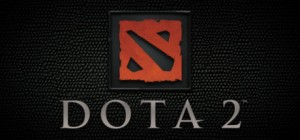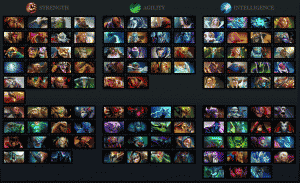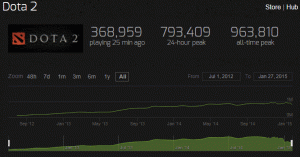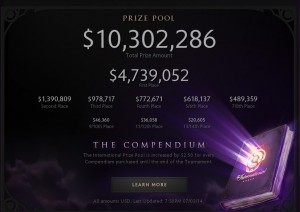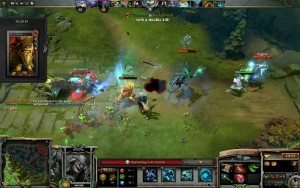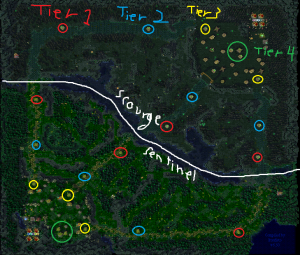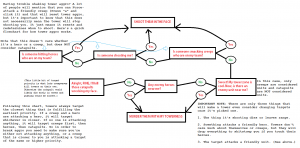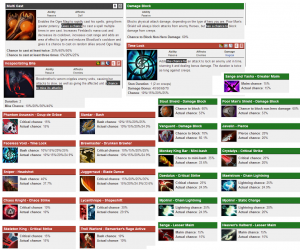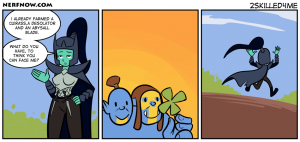CS3247 Assignment 1
Defence of the Ancients 2
http://store.steampowered.com/app/570/
DotA 2 is a multiplayer online battle arena (MOBA) involving 2 teams consisting of 5 players each controlling a “hero” attempting to destroy each other’s respective “ancients” in order to win the game. Designed by Icefrog and his many predecessors including Guinsoo and Eul, the game first made waves in the gaming community as a Warcraft 3 custom game during the “Aeon of Strife era” before it was adopted as a stand-alone in 2013 by Valve.
Latest list of heroes available for selection by players in Dota 2
DotA 2 is a powerhouse in both casual (all-time peak of almost 1 million players) and eSports (USD $10.9 million total prize pool for The International 4). Just like physical sports like soccer and basketball, DotA 2 incorporates both elements of cooperation and competition within an equal game environment.
Steam stats for Dota 2
Prize pool compendium statistics for The International 4
Often criticized for its steep learning curve and unforgivingly harsh environment, players must utilize their knowledge of the game, their mechanical and technical prowess, their prediction of other players’ behaviours, and awareness of the metagame to the fullest in order to win.
Screenshot during a game; this is the scene where the player has been killed by another player, and the camera is looking at a teamfight between two teams with some AI-controlled minions in the fray.
Elemental Tetrad
- Mechanics
- Mechanics is the key to the game. Understanding the rules and interactions of every aspect of the game is crucial to establishing dominance over opponents.
- Story
- Just like competitive physical sports, the focus is not on the story, but there is an overarching lore that encompasses the actors and objects in the game for flavour.
- Aesthetics
- Since split-second recognition and decision-making is highly important, graphical fidelity is kept simple, and high attention is paid to making sure heroes, items and spell effects are uniquely designed to tell them apart immediately in order to access the situation.
- Technology
- Valve’s Source engine is used to replace the Warcraft 3 engine, which allows for greater creative flexibility in terms of mechanics and aesthetics by removing the engine limitations of its predecessor.
Combined distilled observations resulting from watching myself and friends play
Lens 1: Goals
The ultimate goal in every game is the same; the sole victory condition is to destroy a building in the opponent’s stronghold known as the “Ancient”, hence the name DotA – Defence of the Ancients. While the game does not explicitly state this intention, players mostly learn from other players, from inference and observation of game materials, and from trial-and-error as a result of game design.
For the latter, it is observable that the Ancient can only be targeted after the requisite Tier 4 Towers are destroyed, which in turn can only be targeted if its previous tier towers are destroyed. This natural progression of inference, emphasized further by the successive positioning of the 4 tiers of towers, leads one to induce that the Ancient would naturally be the “Tier 5 tower” that should next be destroyed.
Tower Tier position guide based on WC3 Dota mini-map
In order to reach the victory condition, there are many sub-methods, or strategies to utilize. However, the game does not disclose any of them, because the effectiveness of these strategies is highly dependent on the current game’s meta (the popular environment resultant from changes made in the latest game version) as well as the proficiency and drafts of both teams.
For example, during TI3, professional eSports team [A]lliance won by utilizing a split-push strategy that involved distraction and fragmentation of team members (more popularly derided as “rat doto”). During TI4, the meta resulted in Chinese teams – such as Newbee, Vici Gaming, and Team DK – changing their strategy from a late-game turtling strategy (known as “ricing”) to an early-game 5-man push strategy (known as “push doto”).
Lens 2: Rules
The rules of the games decide its mechanics which in turn decide the game’s meta, thus knowledge and proficiency of it is the key determining factor of victory. From micro-specific knowledge – such as “animation backswing” (time taken between the execution of a current action to the next queued action) and “cast point” (time taken to cast a spell) of each hero, to macro-specific knowledge – such as “fog of war” (areas of the map that players lack vision) and “creep aggro” (rules that AI-controlled minions follow that decide who they target).
Reddit’s flowchart guide on Tower Aggro
The same rules are applied to every player, and they are unyielding and concrete in every single game, with changes explicitly outlined in the patch notes. While different game modes exist, most of them merely change the drafting stage (“All Pick” allows players to choose any hero that has not been chosen by other players, while “All Random” forces every player to select a random hero) while maintaining the rules of the core game.
There are so many rules that govern so many interactions that both the knowledge of all the relevant rules and the ability to exploit and execute them in the heat of the moment makes up the skill curve in the game.
Lens 3: Skill
The skills that differentiates high and low skill brackets can be broadly categorized as mechanical prowess (ability to execute actions well at the optimal timing and positioning), game awareness (knowledge of rules, constant awareness of the environment and spontaneous decision making), and communication (organizing and executing strategies and tactics, ability to pull off team synergies effectively).
While communication is highly dependent on the team dynamic and the level of cooperation within the players, the first two skill categories will largely vary between the skill brackets and are the major benchmarks of player skill. Naturally, mechanical prowess can improve upon repetitive practice, but game awareness can only improve if one makes a mindful effort to do so.
Lens 4: Chance
Luck is prevalent in many aspects of the game, from minor (damage ranges of normal attacks) to moderate (type of rune spawn) to major (effects of special attacks). While Icefrog has made attempts to normalize and reduce the effects of randomness, such as allowing 2 runes to spawn in both positions instead of 1 rune at a random position, and by introducing a “pseudo-RNG system” that partially introduces a level of determinism into probability-based events, there still exist game changing major events that are purely determined by chance.
Non-exhaustive list of effects relying on random chance
However, these are sometimes balanced by a factor of risk-taking (“If the dice rolls correctly I win the fight, if it fails I lose the fight, so should I or should I not take the fight?”), and the skill level and experience of a player determines his ability to balance reward and risk optimally in the split-second when its required.
From a comic by NerfNow.com, it illustrates the hero (Ogre Magi) that is the definition of “game-changing luck”, who has the innate ability to cast several spells multiple times simultaneously (Multicast) while retaining its effectiveness throughout the game without requiring any equipment.
Analysis from perspective of Lenses
Lens 1: Goals
While there have been methods to ease in new players ranging from game tutorials to loading screen tips, I believe that more can be done to outline the overarching decisions players need to make in every stage of the game. The victory condition should always be explicitly announced at the start of the game, and the sub-conditions should be outlined in a corner of the UI (allow experienced players to hide it). This allows new players to constantly keep track of their progress and to gain familiarity with the stage of the game they are currently at.
Lens 2: Rules
Due to the encyclopaedic volume of rules it is impossible to outline them all during play; it is similar to how the referee expects players to understand the rules and infractions of the soccer without outlining it to them. Therefore, knowledge of the rules is part of the learning curve that makes up a player’s skill level. However, more can be done by the developers providing the necessary information explicitly, though this in part has been mitigated by guides posted by players.
Lens 3: Skill
The balance of skill requirements in the game is excellent. While heroes vary in skill ceilings in order to utilize them to their fullest, they are almost balanced not by pure power (a high skill ceiling hero does not always win a low skill ceiling hero) but by utility.
Therefore, the core skills required in the game tends to be universal across heroes, and combined knowledge and proficiency of game-specific skill and hero-specific skill forms the entirety of a player’s ability to perform, with the former always holding dominance. Also, a large proportion of skill is determined not by mere regurgitation of facts, but by real-world attributes such as spontaneous decision making and team management.
Lens 4: Chance
I believe that more can be done to mitigate the pure randomness of some events. For example, an item called “Sange” has a % chance inflict an effect. Another MOBA called HoN implemented this by making it 100% chance to inflict a fraction of the effect, with each successive attack adding to the effect to a specified maximum. For another example, a hero called “Faceless Void” has an ability that inflicts an effect with a 25% chance. HoN implemented this as a 100% to inflict this effect every 4th attack.
Comparison between implementations of the same item idea in HoN vs DotA
As mentioned earlier, Icefrog selectively implemented a pseudo-random distribution that made every probability-based interaction dependent on each other (instead of independent like a true random distribution) that mimics the expected long-term expected behaviour of a true random distribution even for low volume of samples. However, there are still areas that are open pure chance that may majorly affect gameplay, including the examples mentioned above.
Probability distribution of pseudo random vs true random
On a kinder note, many of these have been mitigated by the decision-making process of players and their risk appetites, and it introduces an element of speculation and risk-taking in gameplay. Admittedly, it would also be difficult to rework some of the random-based effects while keeping the intention of its existence similar, and creative implementation would be required to do so effectively.

